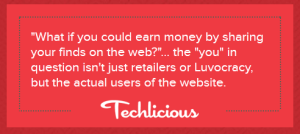We have all heard of the amazing success of some online business. One common theme is their ability to apparently do more with less and avoid the large size and cost of the ‘bricks and mortar’ business’.
One stellar success is Wikipedia, the product of Wikimedia. The success story goes something like this: In 2007, Wikimedia was based in a shopping centre with fewer than 10 employess, raised under $3 million annually, and had total assets of over $5 million. Today, Wikimedia has roughly 160 paid employees, raised $25 million from 1.2 million donors, and has total assets of over $49 million. So what did they do right?
Maybe we should be asking, what did they do wrong? Apparently, their first version was called Nupedia and users had to fax copies of their credentials AND pass a seven-stage review to prove they were qualified to contribute. Unsurprisingly, it was a total flop – but provided the lessons required to make Wikipedia the success it is today.
The success of Wikipedia and other online business can be explained by one of the Web 2.0 patterns proposed by O’Reilly of ‘lightweight models and cost-effective scalability’. Although O’Reilly was focused on programming, this can also be applied to business models, development models and technology solutions. The main idea is to do more with less and focus on small low-cost startup, scale in a responsive and cost-effective way, and fail fast and correct quickly.
Since we all know Wikipedia has got it sorted, I’d like to take a closer look at another small startup and see if they are headed in the right direction.
 A Small Orange is a small web-hosting business that is getting good recommendations in the web-hosting space but have only 30 employees who serve tens of thousands of customers around the world with 24/7 support.
A Small Orange is a small web-hosting business that is getting good recommendations in the web-hosting space but have only 30 employees who serve tens of thousands of customers around the world with 24/7 support.
They started 10 years ago with 2 employees and have grown to be named in the top of the web-hosting options and have gained a reputation for having over $1 million in revenue, are profitable and didn’t take venture capital. So how do they do it?
A Small Orange has spent the last 10 years working towards the best-practices of the pattern:
- They scale their pricing and revenue models with a small up-front and sliding costs for more reliable servers.
- They outsource their servers and recommend other services (eg HootSuite at http://hootsuite.com/) so customers can manage and track their accounts.
- They scaled their business model with the recent introduction of the ‘affiliates program’ to reward customers for recommendations.
- They market virally, with their chief executive creating quirky and commercial YouTube videos.
- They ‘fail fast and scale fast‘ when they were suffering from poor servers and bad customer reviews in 2008 leading to a server upgrade in 2011 and 2012 and improved customer reviews.
A Small Orange highlights some of the benefits of the pattern with their faster time to market and faster return-on-investment due to the lower initial costs and avoiding the need for venture capital.
But they have also experienced some of the problems. Their low staffing has resulted in some slow customer service and their outsourced servers left them exposed when the servers were not proving adequate.
They could also capitalise on some other ideas like outsourcing some customer support by using ‘crowd sourcing’ to let other customers provide solutions or suggestions to reduce the drain on customer support staff.
Overall, they have proven success from this pattern and look like they are headed for more success in the future.
_______________________________________________________
An example of this light-weight and scalable pattern being implemented as a business initiative within a large organisation is this example of innovation, crowd-sourcing and the concept of ‘fail fast, fail cheaply’ within AMP, Australia:
_________________________________________________________
UPDATED 24 May 2013: How does the Tumblr acquisition by Yahoo fit the ‘scalability’ approach?
UPDATED 25 May 2013: Tumblr users are fleeing







